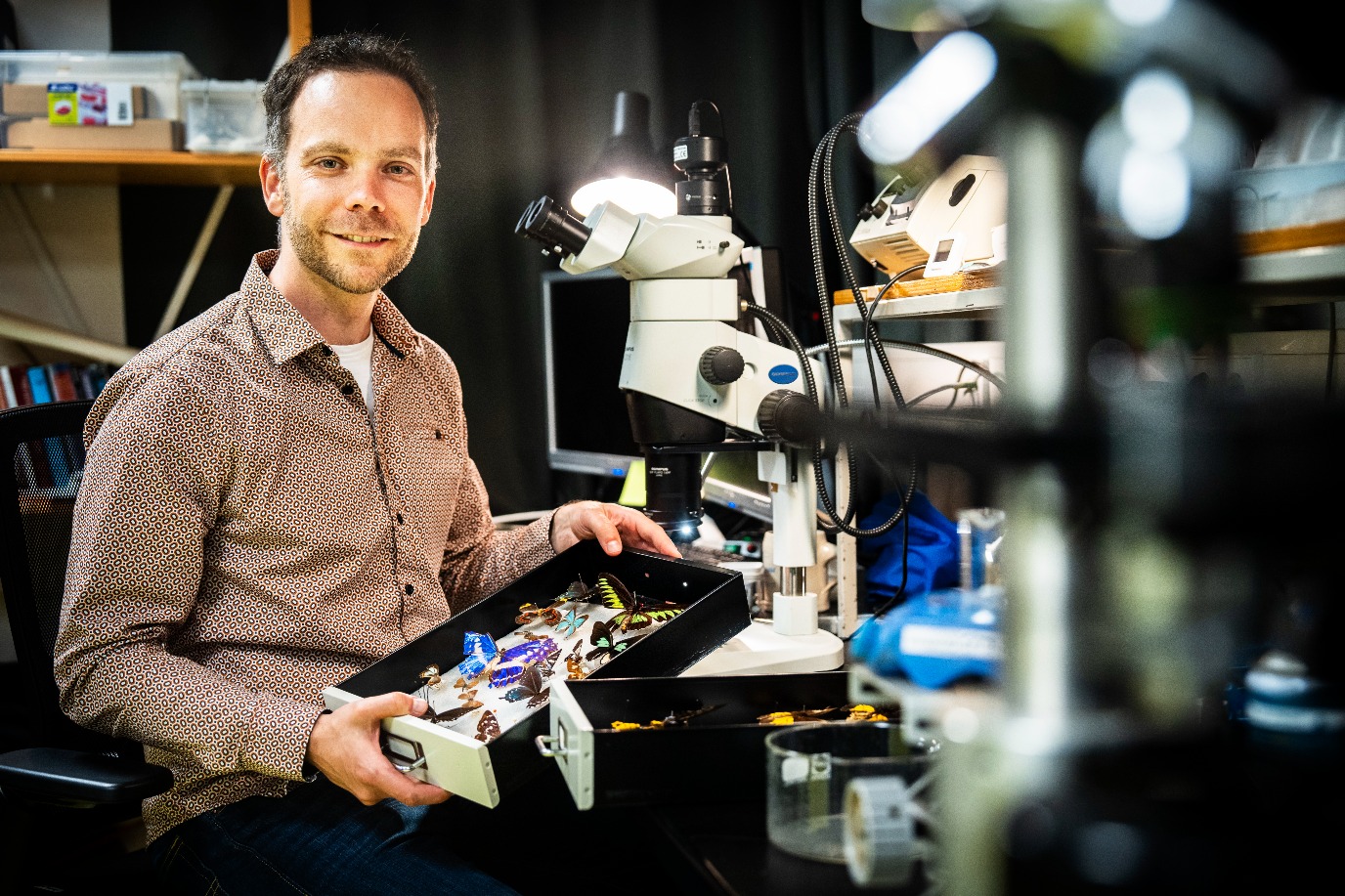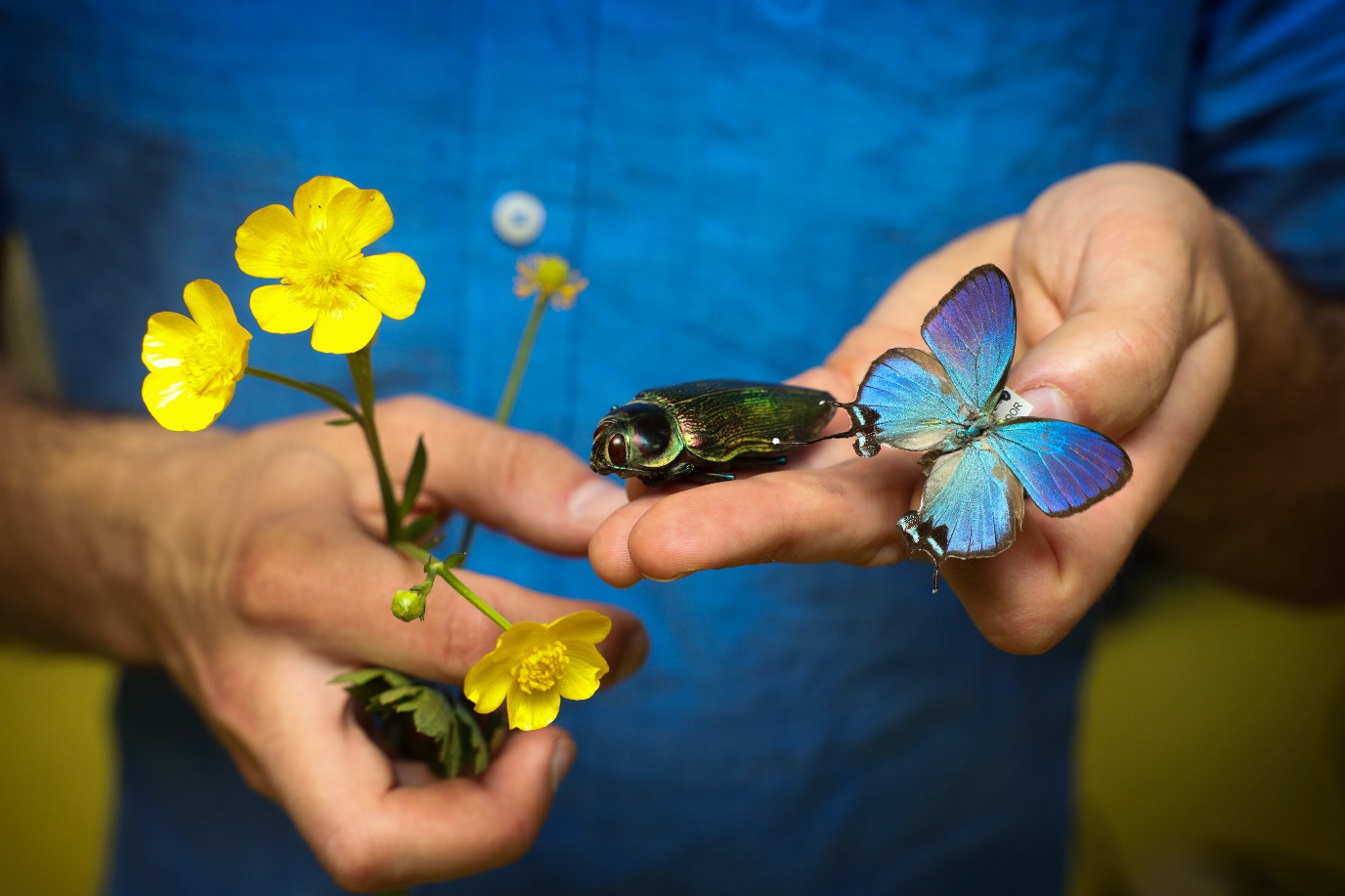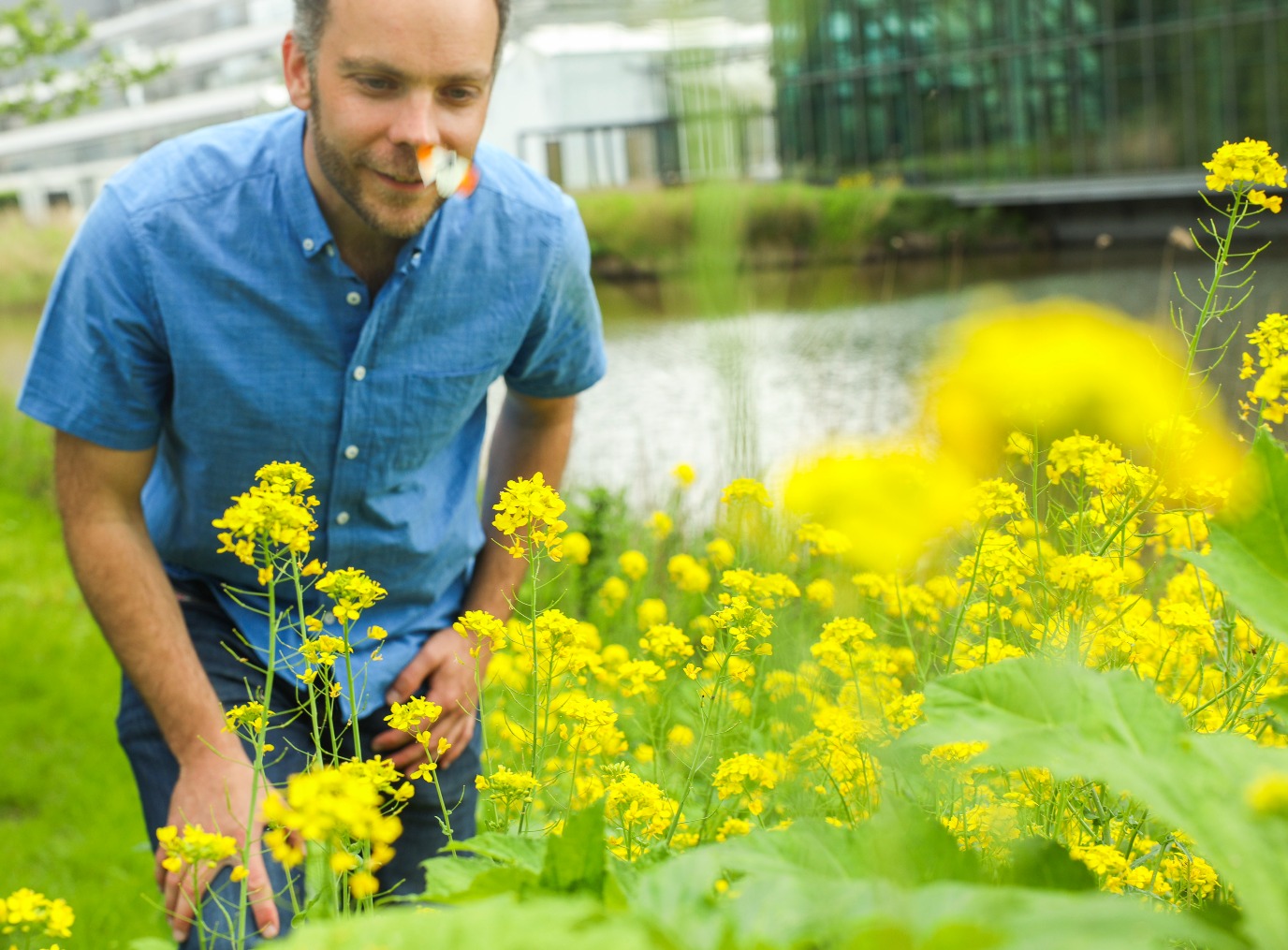Heineken Young Scientists Award for Casper van der Kooi
In recognition of outstanding research in the field of Natural Sciences, Dr. Casper van der Kooi will receive the Heineken Young Scientists Award. Van der Kooi studies how flowers and animals such as butterflies get their colors and how those colors are used to attract pollinators or mates. According to the jury, his work is scientifically advanced and of great social value. The prize is an unrestricted amount of EUR 15,000.
The Heineken Young Scientists Awards are designed to provide additional encouragement to the next generation of talented researchers. They are awarded in September to four young scientists, simultaneously with the international Heineken awards.

Crossing scientific boundaries
Van der Koois expertise is focused on the origin and function of the colors of flowers and butterflies. Thanks to his work, we now better understand how plants and animals, and animals amongst themselves communicate with each other. Van der Kooi has a background in both physics and biology. The jury says that by combining both areas of expertise, he crosses scientific boundaries, which makes his work unique and of high quality.

Role in public debate
The jury also praises Van der Kooi for his role in the public debate. As a frequent guest on radio, TV and in newspapers, he makes biodiversity issues debatable. In this way he brings the abstract concept of biodiversity to life and makes a large audience aware of its importance. To appeal to a younger audience as well, he is currently working on a children's book about plant evolution.

Heineken Young Scientists Awards
The Heineken Young Scientists Awards have been presented since 2010. Since 2018 they are awarded in four domains: Medical/Biomedical Sciences, Humanities, Natural Sciences and Social Sciences. The Awards are funded by the Alfred Heineken Fondsen Foundation.
Read more
More news
-
05 November 2025
Ten years of lifting paving stones
-
04 November 2025
Prostheses with a human-centered approach
-
04 November 2025
AI Factory in Groningen advances digital sovereignty
